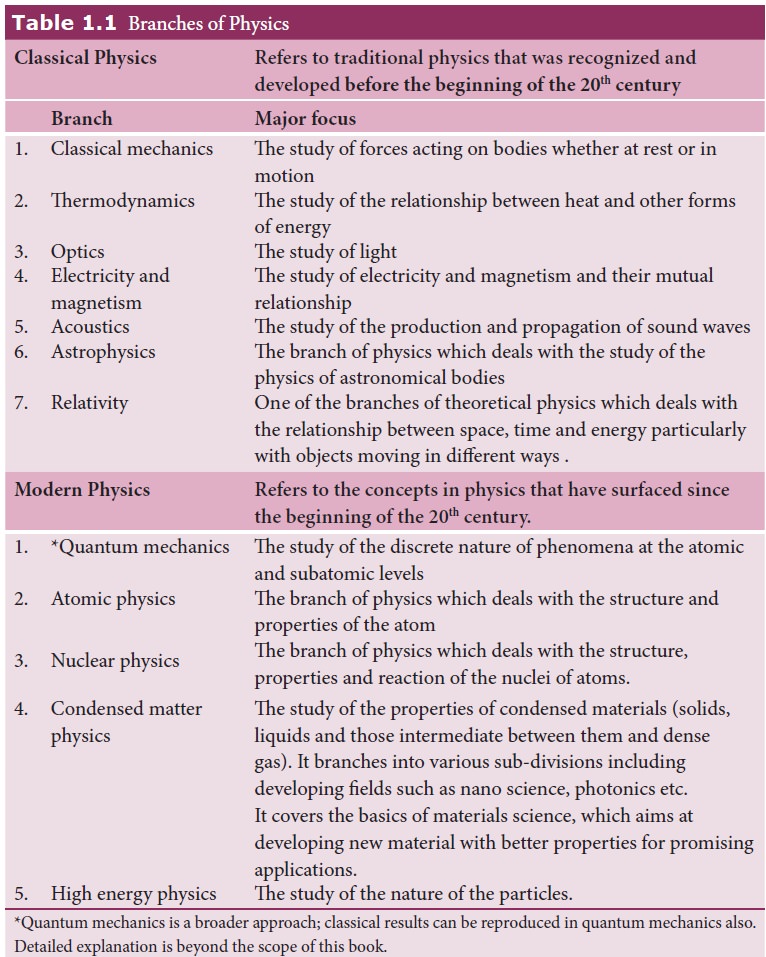Chapter: 11th Physics : UNIT 1 : Nature of Physical World and Measurement
Branches of Physics
Branches
of Physics
Physics
as a fundamental science helps to uncover the laws of nature. The language of
its expression is mathematics. In ancient times, humans lived with nature -
their lifestyles were integrated with nature. They could understand the signals
from the movement of the Stars and other celestial bodies. They could determine
the time to sow and reap by watching the sky. Thus, astronomy and mathematics
were the first disciplines to be developed. The chronological development of
various branches of physics is presented in Appendix A1.1. The various branches
of physics are schematically shown in figure 1.1. The essential focus of
different areas is given in Table 1.1.

Some
of the fundamental concepts of basic areas of physics are discussed in higher
secondary first year physics books volume 1 and 2. Mechanics is covered in unit
1 to 6. Unit 1 gives an idea of the development of physics along with
discussion on basic elements such as measurement, units etc. Unit 2 gives the
basic mathematics needed to express the impact of physical principles and their
governing laws. The impact of forces acting on objects in terms of the
fundamental laws of motion of Newton are very systematically covered in unit 3.
Work and energy which are the basic parameters of investigation of the
mechanical world are presented in unit 4. Unit 5 deals with the mechanics of
rigid bodies (in contrast, objects are viewed as point objects in units

The basics of gravitation and its consequences are discussed in unit 6.
Older branches of physics such as different properties of matter are discussed
in unit 7.
The
impact of heat and investigations of its consequences are covered in units 8
and 9. Important features of oscillations and wave motion are covered in units
10 and 11.
Related Topics